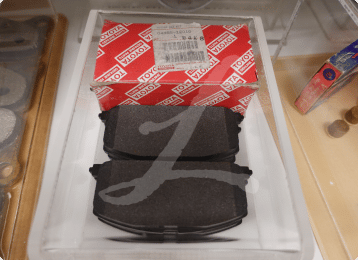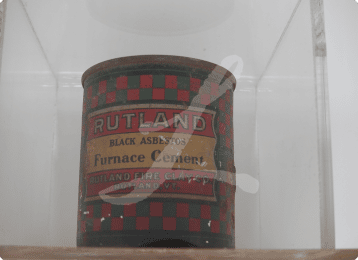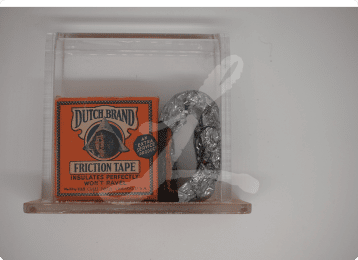Asbestos Laws and Regulations
Asbestos regulations are imposed by the EPA, OSHA, and state laws to minimize the release of asbestos fibers into the environment and protect public health. Large corporations have fought against regulation for nearly a century to continue profiting from this harmful substance.
Home » National Mesothelioma Law Firm » Asbestos Exposure » Asbestos Laws and Regulations

Legally Reviewed By: Sam E. Taylor
Managing Attorney | Mesothelioma & Asbestos in Houston
- Page Last Updated:
- December 4, 2024

Legally Reviewed By: Sam E. Taylor
Managing Attorney | Mesothelioma & Asbestos in Houston
- Page Last Updated:
- December 4, 2024
Asbestos is a toxic environmental pollutant that poses a serious threat to public health. Surprisingly, asbestos is not entirely banned in the United States. Even if there were a ban, asbestos would continue to be a threat due to its widespread use throughout much of the 20th century.
Asbestos is hazardous to human health even with limited exposure. There is no safe level of asbestos. Asbestos laws regulate asbestos-containing materials, which the Occupational Safety and Health Administration (OSHA) defines as materials comprised of at least one percent asbestos.
Asbestos Products Still in Use
The use of asbestos in the United States has declined markedly since the 1970s, when its dangers became widely known. It is primarily used today in diaphragms for the production of chlorine.
The Agency for Toxic Substances and Disease Registry (ATSDR) acknowledges that asbestos is still commercially used in the following products:
- Certain automobile brake pads and clutches
- Corrugated sheeting
- Imported cement pipe
- Roofing materials
- Vinyl flooring tiles




EPA Asbestos Regulations
The Environmental Protection Agency (EPA) was created in 1970 as a response to growing concerns regarding pollution and its harmful effects on the environment. The EPA bears most of the federal regulatory authority concerning environmental pollutants like asbestos. Since its creation, several landmark laws have been enacted to regulate the use of asbestos.
1970: The Clean Air Act
The Clean Air Act is a comprehensive set of regulations to control hazardous emissions, most notably the National Emission Standards for Hazardous Air Pollutants (NESHAP), a program specifically established to regulate toxic air pollutants, also known as air toxins.
The Clean Air Act evolved over the years to expand its scope, with the last revision occurring in 1990.
1973: Asbestos NESHAP
Asbestos was one of the first toxins to be regulated under NESHAP. In 1973, the EPA adopted Asbestos NESHAP to minimize the release of asbestos fibers into the air.
1976: The Toxic Substances Control Act (TCSA)
The TCSA gives the EPA authority to regulate chemical substances, including asbestos. The EPA can require reporting, recordkeeping, and testing. It can also impose restrictions. The TCSA also regulates the manufacture, import, and disposal of toxic substances.
1980: The Comprehensive Environmental Response, Compensation,
and Liability Act (CERCLA)
Also known as Superfund, CERCLA established a tax on the chemical and petroleum industries and provided broad federal authority over releasing hazardous substances. The taxes collected are allocated to a trust fund for cleaning up hazardous waste sites.
This law also established liability for releasing hazardous waste at cleanup sites and authorized short-term removals and long-term remedial action.
1986: The Asbestos Hazard Emergency Response Act (AHERA)
AHERA established federal regulations requiring schools to perform asbestos inspections and take appropriate action when asbestos risks are identified. The act also requires schools to institute a management plan and take measures to abate asbestos that is deemed hazardous.
The law allows asbestos to remain in place unless it is disturbed, which is when it becomes a hazard.
1988: The Asbestos Information Act
The Asbestos Information Act requires those who manufacture or process asbestos to report it to the EPA and for the EPA to make the information public.
1989: Asbestos Ban and Phase Out Rule
The 1989 Asbestos Ban was made by the EPA, which banned a majority of asbestos-containing products. However, the asbestos industry fought hard against this ban. In 1991, the U.S. Court of Appeals for the Fifth Circuit sided with the asbestos companies. It reversed most of it, undermining the EPA’s authority under the Toxic Substances Control Act and making it difficult for the EPA to ban any chemicals.
As a result of the ruling, the EPA was only allowed to ban new commercial uses that would begin after August 25, 1989 and the following asbestos-containing products:
- Corrugated paper
- Commercial paper
- Specialty paper
- Rollboard
- Flooring felt
2016: The Lautenberg Chemical Safety Act
The EPA’s authority to regulate harmful air pollutants remained severely limited for approximately 25 years until the passage of the Lautenberg Chemical Safety Act. The passage of this act re-establishes the EPA’s authority under the TCSA.
Under this act, the EPA is required to evaluate existing chemicals within enforceable deadlines and approve new chemicals before they can enter the marketplace. This provides the following benefits:
- Increases public transparency about hazardous chemicals
- Empowers the EPA to carry out these responsibilities
- Provides funding, enabling the EPA to carry out these responsibilities
2019: EPA Final Rule on Asbestos
The EPA quickly capitalized on its newly established authority afforded by the Lautenberg Chemical Safety Act and issued a final rule prohibiting all discontinued uses of asbestos from re-entering the marketplace without EPA review and approval.
In addition to the products banned in 1989, this rule also restricts the following asbestos-containing products:
- Adhesives, sealants, and coatings
- Cement products
- Friction materials
- Millboard
- Pipeline wrap
- Woven products
- Other building materials
April 5, 2022: Proposed Final Rule Banning Asbestos
The EPA proposed a risk management rule under the Lautenberg Chemical Safety Act that would ban chrysotile asbestos imports, manufacture, processing, distribution in commerce, and commercial use in six categories of asbestos products:
- Asbestos diaphragms used in the chlor-alkali industry
- Sheet gaskets
- Aftermarket auto brakes and linings
- Oilfield brake blocks
- Vehicle friction products
- Other gaskets
The law would also update disposal and recordkeeping requirements to meet current regulatory standards. Chrysotile asbestos is used exclusively in the chlor-alkali industry.
March 18, 2024: Chrysotile Asbestos Banned in the U.S.
The EPA announced a final rule banning ongoing uses of chrysotile asbestos in the United States.
OSHA Regulations
OSHA regulates workplace safety and imposes asbestos-related standards in the workplace.
In 1971, OSHA set an emergency asbestos standard, establishing a maximum permissible exposure limit (PEL) of five fibers per cubic centimeter over an eight-hour weighted average work day, with a maximum PEL at any time of 10 fibers per centimeter.
In 1972, OSHA finalized the PEL. As more information about the dangers of asbestos came to light, the PEL was reduced over the years as follows:
- 1976 – 2 fibers per cubic centimeter
- 1986 – 0.2 fibers per cubic centimeter
- 1994 – 0.1 fibers per cubic centimeter
State Laws
State laws govern the inspection and removal of asbestos from residential dwellings and commercial buildings. These laws typically require building contractors of older buildings to inspect facilities at specified intervals and remove asbestos when inspections reveal that asbestos is creating a health hazard.
State laws also govern the licensing requirements and qualifications of businesses and individuals who inspect and remove asbestos. While the EPA regulates removal and disposal processes, individual state laws also may be passed to augment these requirements.
Why is asbestos still legal?
The proposed final rule, if approved, will essentially ban asbestos. Until now, asbestos has remained legal because large corporations that profit from asbestos have fought to keep it legal. This is because corporate executives think with their wallets.
The asbestos industry has an almost 100-year history of concealing the dangers of asbestos to avoid regulations and continue to profit. These corporations prevailed against the EPA after the 1989 asbestos ban, and they can be expected to continue their fight to profit from a product that kills thousands of people every year.
By submitting this form, you agree to our terms & conditions. Please read the full disclaimer



